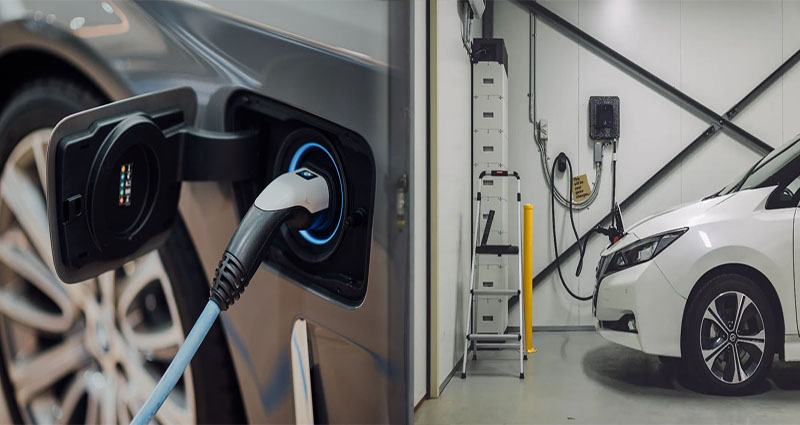As the world continues to transition to a more sustainable future, electric vehicles (EVs) are gaining traction due to their lower carbon emissions and reduced environmental impact. In recent years, an innovative technology known as Vehicle-to-Grid (V2G) has emerged, which not only allows EVs to consume electricity but also enables them to supply power back to the grid. In this article, we will explore the potential of Vehicle-to-Grid (V2G) technology for electric vehicles.
What is Vehicle-to-Grid (V2G) Technology?
Vehicle-to-Grid (V2G) technology enables electric vehicles to act as mobile energy storage units that can both draw electricity from and deliver electricity back to the electrical grid. This capability transforms EVs from passive energy consumers into active participants in the energy ecosystem.
To utilize V2G technology, EVs need to be equipped with bidirectional charging capabilities. This means that not only can the vehicle charge its battery from the grid, but it can also discharge power back to the grid when needed.
Reducing Grid Stress and Peak Demand Management
One of the primary benefits of V2G technology is its ability to reduce grid stress and manage peak demand. During periods of high electricity demand, such as hot summer days when air conditioning loads are at their peak, the electrical grid can become strained. V2G-enabled EVs can help alleviate this strain by supplying stored energy back to the grid, effectively reducing the need for additional power generation.
By using the energy stored in EVs, utilities can better manage fluctuations in electricity demand and mitigate the impact of peak loads on the grid. This not only improves grid efficiency but also enhances grid stability and reliability.
Grid-Friendly Renewable Energy Integration
Renewable energy sources, such as solar and wind, are highly dependent on weather conditions and intermittent in nature. V2G technology can play a significant role in overcoming these challenges by facilitating the integration of renewable energy into the grid.
During periods of excess renewable energy generation, V2G-enabled EVs can store this excess energy and discharge it back to the grid when renewable energy production is low. This allows for better utilization of renewable energy resources, reducing the need for fossil fuel-based power generation during lulls in renewable energy production.
V2G technology, thus, acts as a bridge between renewable energy sources and the electrical grid, enhancing the reliability and stability of the grid while promoting the use of clean energy.
Power Backup and Grid Resilience
In addition to reducing grid stress and integrating renewable energy, V2G technology also offers the potential for power backup and grid resilience. During power outages or emergencies, EVs equipped with V2G capabilities can serve as mobile power sources, supplying electricity to homes, businesses, or critical infrastructure.
This feature not only provides a reliable backup power source but also enhances the grid’s resilience by decentralizing power generation and distribution. By utilizing the collective energy storage capacity of V2G-enabled EVs, communities can become more self-sufficient during emergencies, fostering a more resilient and robust electrical infrastructure.
Unlocking Additional Revenue Streams
V2G technology also offers the potential for EV owners to unlock additional revenue streams. When the EV is not in use or parked for an extended period, the excess energy stored in its battery can be sold back to the grid or used to participate in demand response programs.
By selling excess energy or participating in grid services, EV owners can offset the cost of owning and operating their vehicles. This additional source of income makes EV ownership more financially attractive, further accelerating the adoption of electric vehicles.
Vehicle-to-Grid (V2G) technology holds immense potential for transforming electric vehicles into active players in the energy ecosystem. By enabling bidirectional power flow between EVs and the electrical grid, V2G technology reduces grid stress, manages peak demand, integrates renewable energy, provides power backup, and unlocks additional revenue streams for EV owners.
With further advancements in V2G technology and increased adoption of EVs, we can harness the full potential of Vehicle-to-Grid technology, creating a more resilient, sustainable, and efficient electrical grid that benefits both individuals and society at large.





